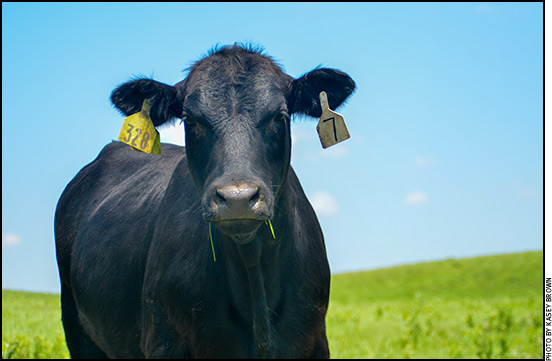HEALTH & NUTRITION...

BVD Control
Recent research shows the net value of enhanced BVDv control in the beef industry may be as much as $24 per head.
Markets generally do a very efficient job of allocating resources and achieving optimal outcomes. However, markets sometimes fail to provide efficient and socially desirable results. Market failure is usually the result of situations where market participants do not fully recognize and incorporate all costs and/or benefits into their private decisions.
Bovine viral diarrhea virus (BVDv) disease is an example of market failure. BVDv is one of the contributing disease agents in bovine respiratory disease (BRD). BVDv is an immunosuppressive disease that increases the morbidity and virulence of other respiratory disease agents. Read more.
Tetanus in Cattle
Common vaccines don’t include protection against tetanus; learn how to protect your cattle.
Several serious livestock diseases are caused by a group of bacteria called clostridia. Cattle can be protected against the most common ones with seven- or eight-way vaccines, but tetanus is generally not included in those vaccines.
Clostridia can produce deadly toxins that may kill the animal if they get into the bloodstream. Toxins of different types of clostridia vary in their effects and the way they gain access to the bloodstream. These bacteria multiply in the absence of oxygen — such as in a deep puncture wound where the bacteria are not exposed to air, in bruised tissue with compromised blood supply or in certain conditions within the digestive tract.
Read more.
Keep Records for Drug Withdrawal Times
Keep these tips in mind for easy recordkeeping on drug withdrawal times.
When a food animal is given medication, it takes a certain amount of time for the body to break it down and eliminate it. During that period the animal should not enter the food chain.
Different drugs or medications have different withdrawal times before slaughter. This waiting time is to make sure any residue left in the meat is below the Food and Drug Administration’s (FDA’s) maximum residue limit. Withdrawal times are on the label. Some kind of record system is needed to keep track of withdrawal times on products for each of those animals. Read more.
Risk of Blue-green Algae in Farm Ponds
K-State beef veterinarian outlines some of the warning signs and preventative steps.
The looming hot, summer weather and potential for lots of sunlight may bring with it a cause for concern among livestock producers.
Those conditions, combined with the often stagnant nature of farm ponds, heighten the risk of toxic levels of blue-green algae in producers’ watering sources, says Kansas State University beef veterinarian A.J. Tarpoff. Read more.
Help Calves Hit the Ground Running
Veterinarian gives advice on how to keep calves in good health with the help of probiotics.
After calves are on the ground, one of the most important factors to keep cattle gaining is minimizing health challenges, advises H. Nielsen, veterinarian in the Technical Service — Ruminant department of Lallemand Animal Nutrition. Read more.
Be Prepared for Hurricane Season
AgriLife Extension offers hurricane preparedness, recovery information.
With June 1 marking the start of hurricane season, the Texas A&M AgriLife Extension Service is reminding those along the coast that the agency provides a wealth of disaster and emergency preparedness and recovery information.
“Texas Extension Disaster Education Network website and the Texas A&M AgriLife Extension Bookstore website have a variety of this type of information, most of it available free of charge or at a minimal cost,” said Monty Dozier, AgriLife Extension special assistant for Rebuild Texas, College Station. Read more.
Quick Tips
Keep your cattle and margins healthy.
Treating bovine respiratory disease (BRD) is expensive — plain and simple. The average cost of a BRD antibiotic treatment is $23.60. However, what can get even more expensive than treating BRD is not treating BRD effectively.
BRD is behind about 50%-70% of cattle deaths on feedlots each year. If we only consider the purchase price of the calf, assuming $900 per head, every 1% mortality would add a $9-per-head cost to your breakeven. Read more.
Cattle Diseases: Common Conditions/Terms
Click here for a list of common conditions and terms related to beef cattle diseases, such as anaplasmosis, brucellosis, BVD, E. coli, IBR and others.
[Click here to go to the top of the page.]






